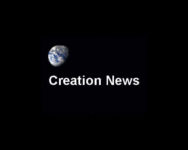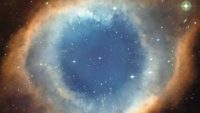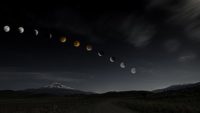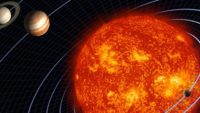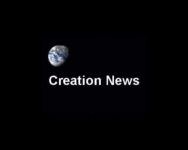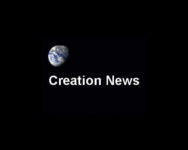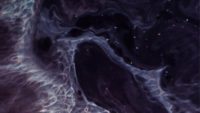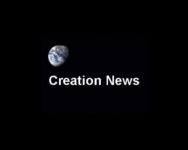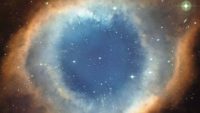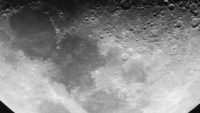When did stars explode, and how can we see their light under a biblical time frame? Are they compatible with a very good creation? …read more Source: creation.com
Could solar superflares have made the supposed ‘early’ Earth inhospitable for life? Read More
By Dr. Danny R. Faulkner Creationists frequently quote Hubble to the effect that he inserted the cosmological principle to avoid stark realties about the universe that his data implied. …read more Source: AIG Daily
By Dr. Ron Samec After 29 years of research, a creation astronomer has observable evidence that stars can’t be billions of years old. …read more Source: AIG Daily
Astronomers claim they have found a protoplanet forming around a young star, but not so fast. …read more Source: creation.com
By Harry F. Sanders, III Dr. Danny Faulkner’s recent Answers Research Journal article makes a number of important points about redshifts, quasars, and an expanding universe. …read more Source: AIG Daily
By Dr. Danny R. Faulkner Flat-earthers spend considerable time and effort attempting to debunk all things from NASA. In this article, I will take up two of their complaints. …read more Source: AIG Daily
Saturn is too hot for its evolutionary age. It should’ve cooled off if it were 4.5 billion years old. What can we learn about the age of the universe from our solar system? How can biblical creationists confidently assert a young age for celestial objects like blue stars? Listen: The Institute for Creation Research
Naturalistic assumptions can get in the way of understanding the origin of solar system objects. Read More
By Dr. Danny R. Faulkner Sights like a lunar eclipse are possible only because of our moon’s unique relationship to the earth. …read more Source: AIG Daily
Oxford scientists cast doubt on intelligent life outside Earth; Elon Musk says this is all the more reason to colonize space. …read more Source: <a href=http://creation.com/dissolving-fermi-paradox target=_blank title="Dissolving the Fermi Paradox” >creation.com
By Dr. Danny R. Faulkner June 30 is International Asteroid Day. It’s an opportunity to talk about asteroids and a good time to discuss a recent item in the news related to asteroids. …read more Source: AIG Daily
A look at the problems associated with evolutionary origin-of-life scenarios for our world. …read more Source: creation.com
A team of astronomers recently concluded that a nearby spheroidal galaxy, designated as NGC1052-DF2, contains very little, if any, dark matter.1,2 Since Big Bang scientists use dark matter to explain how galaxies formed, this poses a potential problem for naturalistic views. The galaxy in question, estimated to be about 65 million light-years away, has roughly the same volume as our own Milky Way galaxy, but it&r… More… …read more Source: icr.org
Or is it concluded from the assumption of a big bang? …read more Source: creation.com
Can causes operate at the same time as their effects? …read more Source: creation.com
By Ken Ham “Our universe may end the same way it was created: with a big, sudden bang.” This is the opening line of a recent article on Business Insider. This article highlighted research from a group of Harvard physicists who claim the universe might end with an “instantaneous bang” in 10139 years (that’s 10 million trillion trillion . . . with a lot more trillions of years after it). Here’s their thinking: they believe the Higgs boson particle, a particle in quantum physics that gives other particles their mass, could become destabilized. This could lead to an explosion of [More]
The exoplanet Kepler-78b stuns astronomers, defies evolutionary formation theories …read more Source:
By Dr. Danny R. Faulkner When a probe flew by Pluto, it made a shocking discovery: the surface is young. Astronomers are still scrambling to explain why. …read more Source: AIG Daily
By Dr. Danny R. Faulkner The discovery of a galaxy with little or no dark matter disproves MOND. Therefore, the reality of dark matter is more certain. …read more Source: AIG Daily
A recent news article1 reported that certain types of stars2 in our Milky Way Galaxy have more lithium (Li) in their stellar atmosphere than the current models predict. Before 1982, it was generally believed that Li abundances in “unevolved” low-mass stars3 with low metallicity4 were constant as predicted by Big Bang nucleosynthesis models. However, in that year a closer analy… More… …read more Source: icr.org
Does the moon give us enough clues to estimate how many asteroids impacted the earth. …read more Source: creation.com
By Dr. Danny R. Faulkner The hypothesis that extragalactic redshifts are cosmological is strongly supported. I encourage fellow recent creationists to abandon their doubts that extragalactic redshifts are cosmological and better focus their work on explaining extragalactic redshifts in terms of a biblical cosmology. …read more Source: AIG Daily
Astronomers recently detected an enormous but short-lived increase in radiation from the nearby star Proxima Centauri.1,2 This radiation burst, known as a flare, caused the star to become a thousand times brighter for ten seconds. Our sun also has flares, but those flares are much smaller. At the time of its peak brightness, the Proxima Centauri flare was ten times brighter (in the measured wavelengths) than even the largest flares emi… More… …read more Source: icr.org
By Dr. Danny R. Faulkner Many recent creationists appear to oppose the Hubble relation, the expansion of the universe, and/or cosmological redshifts of quasars. The rejection of these topics by many creationists appears to be motivated by fear of possible evolutionary implications. …read more Source: AIG Daily
By Ken Ham It seems that every other month there’s another article about a new moon-formation hypothesis. This month it’s that “the moon may have formed in a vaporised, doughnut-shaped Earth.” This new model suggests that 4.5 billion years ago something collided with earth, causing it to mushroom out into a “seething, spinning cloud of vaporised rock that resembled a squished jelly doughnut.” Then, within earth’s “puffy edges,” our moon formed. This new model comes from computer simulations of the supposed early earth. These simulations showed a post-collision, shape-shifting early earth, which was a “previously unrecognised planetary structure.” The researcher [More]
Big Bang scientists are wrestling with “serious” contradictory estimates for the size of the Hubble constant—one of the most important numbers in cosmology.1,2 The Hubble constant, indicated by the symbol H0, is important because it’s thought to give the current expansion rate of the universe. It indicates the speed at which galaxies are apparently receding from one another. This apparent … More… …read more Source: icr.org























